Top Ten Transport Innovators in Aotearoa

New Zealanders are famous all around the globe for their inspired, innovative, and sometimes just far-out ways to get from Point A to Point B. MOTAT Stories has pulled together a list of ten inspired innovators from Aotearoa.
Check out these amazing (and often very fun) transport inventions and the dreamers who created them. We've included lots of links to go deeper, so hop on and enjoy the ride!
Richard Pearse invented a powered monoplane in 1903
Richard Pearse was an engineer, farmer and inventor. He is one of Aotearoa New Zealand’s first aviators. His monoplane, invented in a farm shed, allowed him to be one of the first people to leave the ground in a powered aircraft. His first flight in 1903 was a somewhat uncontrolled ‘hop’ of about 50 metres, ending in a crash into a gorse hedge. The plane itself was made from converted farm equipment, bicycle parts, and a bamboo frame with canvas stretched over it. (There is even a Richard Pearse Drive in Māngere, appropriately located near Auckland Airport, at the corner of Amelia Earhart Avenue.)
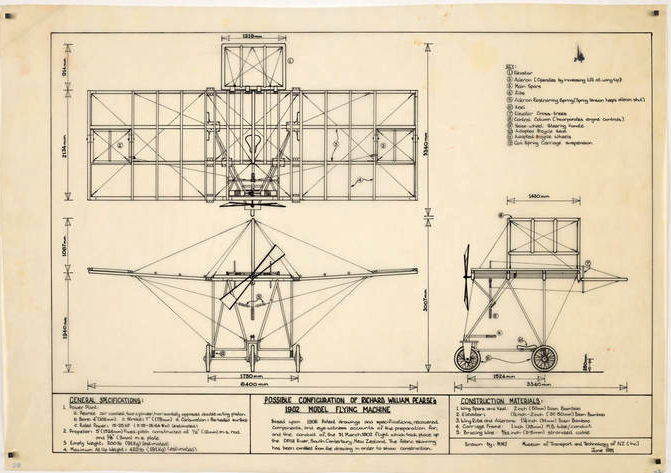
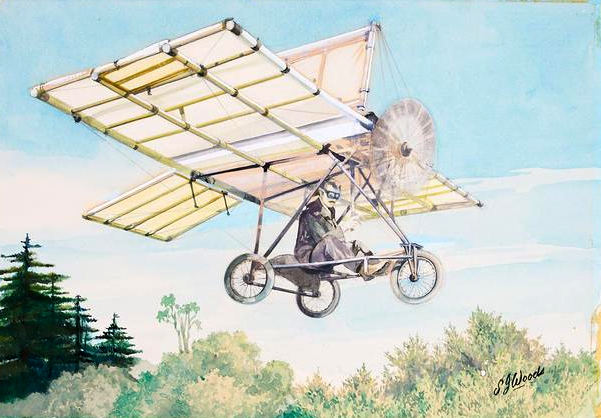
See what is believed to be pieces of one of the first aero engines created by Richard Pearse, currently in MOTAT's collection.
Sir William Hamilton created the Hamilton Jet Boat in 1954
Bill Hamilton was a farmer, inventor, and engineer. He loved exploring the rivers and lakes around his home and as a young man, he dreamed of zooming up the river in a powered boat. He experimented with different motors attached to a small dinghy in the dam on his farm. The jet boat was the first watercraft to propel itself with a jet of water instead of a propeller. This produced a boat that could go very fast, turn quickly, and traverse extremely shallow waters.
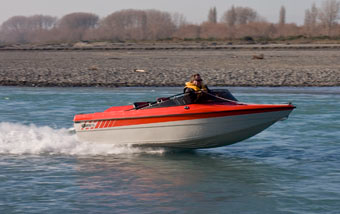
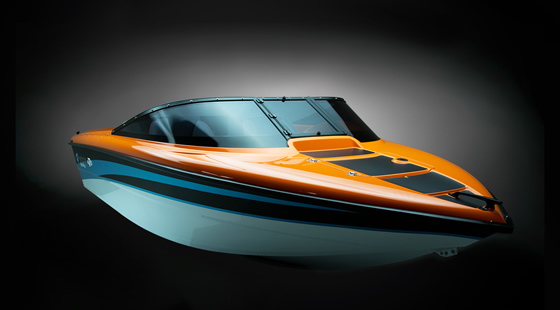
Hoturoa Barclay-Kerr established the Te Toki Voyaging Trust in the 1990s
Te Toki Voyaging Trust is a community of people revitalising the art of waka hourua (the traditional double-hulled voyaging canoe) and navigating using the night sky. After Māori settled in Aotearoa, waka evolved into deep single-hulled vessels that were suitable for transporting people and goods over shorter distances. After Europeans arrived, new modes of transport and suppression of Mataranga Māori led to the near-extinction of waka hourua knowledge. But ocean-voyaging and celestial navigation is undergoing a renaissance thanks in part to Te Toki Voyaging Trust, and the vision and leadership of Hoturoa. Te Toki Voyaging Trust use their waka hourua to connect rangatahi (young people) with their whakapapa, culture, and their role as kaitiaki, innovators, and scientists.
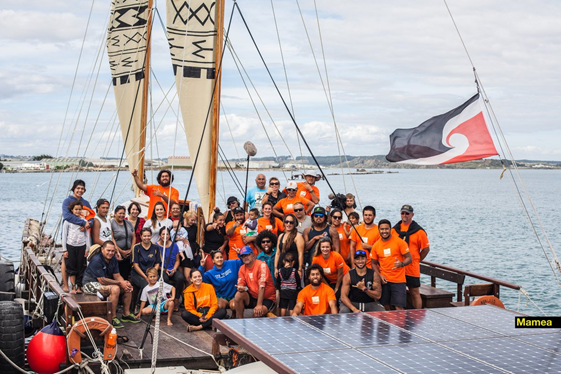
David & Andrew Akers invented the Zorb in 1994
David and Andrew Akers set out to find an innovative way to walk on water. They ended up inventing one of our most famous adventure experiences: the Zorb. Zorbing involves strapping yourself into a large, inflated ball and zooming down a slope. You can also use the Zorb to walk on water or play games such as Bubble Soccer.
Paul Beckett invented the Blokart in 1999
Paul Beckett was looking for a fast, fun adrenaline rush without spending a cent on petrol. He had tried hang-gliding and land sailing, and thought, why not combine the two? The first blokart was created by Paul in his double garage in Mount Maunganui. Today, blokarting is an international phenomenon with its own international association and world championship races.
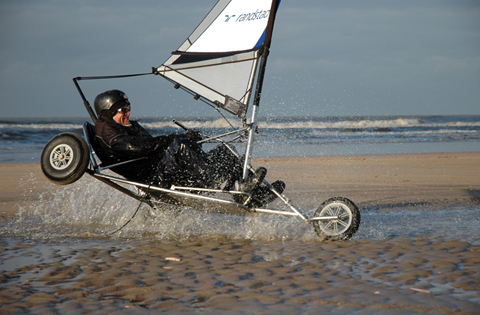
Here’s how to sail a blokart safely.
Alan Gibbs has invented several amphibious vehicles, going back to 2003
Alan Gibbs is a kiwi businessman and entrepreneur who has invented several aquatic vehicles. His inspiration came from the large fluctuating tides near his home of Kaipara Moana, the largest estuary in Aotearoa. The Aquada came out in 2003, after a decade of research and development. This was the world’s first road-legal, high-speed amphibian vehicle. He has gone on to release the Humdinga and Phibian in 2012, and the Quadski in 2013.
Last year, MOTAT proudly welcomed a 2004 Aquada into our permanent collection.

Geoffrey Barnett invented the Shweeb cycling monorail in 2007
Geoffrey Barnett is a kiwi journalist who lived abroad in the bustling city of Tokyo. He is a keen cyclist but was frustrated by being stuck in slow traffic and the dangers of sharing the road with powered vehicles. His solution? A suspended cycle-powered monorail that allows commuters to pedal over the top of traffic. The Shweeb gets its name from the German word Schwebebahn or ‘floating rail’. Riders are suspended in a pedal-powered pod and can reach speeds of up to 50 kilometres per hour. The pods can also click together, allowing faster riders to assist slower ones. A prototype Shweeb opened at the Velocity Valley adventure park in Rotorua in 2007.
Glenn Martin invented the Martin Jetpack in 2008
Like many of us, Glenn dreamed of flying via jetpack like George Jetson. He started designing his jetpack in 1981. Glenn spent the next 30 years working on prototypes and designs. In 2008, he released a personal jet pack aircraft. The Martin Jetpack used huge fans to keep its riders off the ground, for up to 30 minutes at a time.
Guy Howard Willis invented the Manta 5 in 2017
What questions keep you awake at three in the morning? For Guy Howard Willis, it was the puzzle of the aquabike. He reckoned that most road transport has an equivalent watercraft; buses have ferries, motorbikes have jet skis, and cars have jetboats. But bicycles had no equivalent, until the Manta5. After dreaming of this invention for 20 years, Guy was motivated to create an aquabike after thinking that someone else might beat him to it! Guy worked with a team of designers and engineers to invent, prototype, and test the world’s first hydrofoil bike. After six years of research and development, the innovative Manta5 is now available to purchase.
MOTAT is thrilled to have a Hydrofoiler XE-1 as part of our collection. See it in our Collections Online by clicking here.
Paul Barron invented the Woolight in 2019
Paul Barron is a surfboard shaper and innovator committed to making an eco-friendly surfboard. He has been innovating surfboard designs for years through his company Barron Surfboards. Surfboards are traditionally created by shaping a core from styrofoam and coating it with a mixture of resin and fibreglass. But none of those products are environmentally friendly, and Paul wanted to change that. His Woolight surfboard swaps out two of these products for a natural ‘bio-resin’ and Merino wool. The idea came to Paul in a light-bulb moment, when resin accidentally spilt onto a woollen jumper in the workshop.
Two Woolight surfboards are currently on display as part of MOTAT's Love / Science exhibition.
Looking forward to seeing what our next generation of innovators will create?
Story by Phoebe Drayton, Educator, MOTAT
Read More:
Richard Pearse objects in MOTAT's Collection
International Blokart Association
The Hanging Monorail Of Chiba, Japan: Forbes
The New Frontier of Cycling: MOTAT Stories
Citation:
Drayton, Phoebe, 2022. MOTAT Museum of Transport and Technology. Published: 13 April 2022. URL: https://www.motat.nz/collections-and-stories/stories/top-ten-transport-innovators-in-aotearoa
![Barron Surfboards et al. 2019. Surfboard ['Woolight'], 2019.115. The Museum of Transport and Technology (MOTAT).](https://images.ctfassets.net/mplktqcfflsk/6nsF9T8hRtYRHLvAcHJwaF/ccc5d2eb13792ede900aa483a1df5d7f/9fa18aef63ec334396029029a99c3d5a.png?w=800&h=533&q=80&fm=png&bg=transparent)
![Barron Surfboards et al. 2019. Surfboard ['Woolight'], 2019.115. The Museum of Transport and Technology (MOTAT).](https://images.ctfassets.net/mplktqcfflsk/6dCBydiN1nA52yZfZhD5ax/e2252ca44a7550a602a1100b4988c753/b3bc00a9c2f066d4af43ebe01f65ba9d.png?w=800&h=533&q=80&fm=png&bg=transparent)
![Barron Surfboards et al. 2019. Surfboard ['Woolight'], 2019.115. The Museum of Transport and Technology (MOTAT).](https://images.ctfassets.net/mplktqcfflsk/2BIwWxWiKyTeuohHBUffbV/c56f10107a30d1d1705c9310abf7a3c5/9acad249c345382f765a8f26873e7a6e.png?w=800&h=533&q=80&fm=png&bg=transparent)
![Barron Surfboards et al. 2019. Surfboard ['Woolight'], 2019.106. The Museum of Transport and Technology (MOTAT).](https://images.ctfassets.net/mplktqcfflsk/6PVClzhwBFAEQevxUrucld/4310733a42a681932863ee131480d9f0/ad709fbdffcf8161c5f56ec33dc76eeb.png?w=800&h=533&q=80&fm=png&bg=transparent)
![Barron Surfboards et al. 2019. Surfboard ['Woolight'], 2019.106. The Museum of Transport and Technology (MOTAT).](https://images.ctfassets.net/mplktqcfflsk/25b6vxUiNetamlmxb5tfud/bbca55422ba8e9e25f5be97f1fd7b6ba/8815415360807637086fe703e0bde1cd.png?w=800&h=533&q=80&fm=png&bg=transparent)
![Barron Surfboards et al. 2019. Surfboard ['Woolight'], 2019.106. The Museum of Transport and Technology (MOTAT).](https://images.ctfassets.net/mplktqcfflsk/10SF2HxIrKGiHyhTZBZRZY/d97a24a96d292a4045615d621b79c73b/128921c956a851893a89f847fab2be56.png?w=800&h=533&q=80&fm=png&bg=transparent)